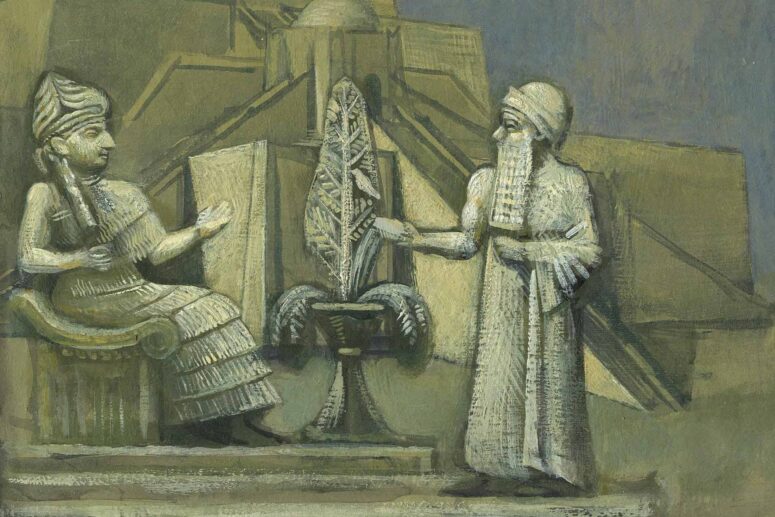
Everyone reading the Bible must have noticed that our forefathers lived for a tremendous number of years, sometimes reaching a thousand-year milestone, as in the case of Adam, who lived for 930 years. What is the reason for such longevity? How does the Christian tradition explain it and are there any explanations in the academic circles?
Religious explanation
Surely, there is a traditional interpretation of the longevity, characteristic of the first people. According to this view, the forefathers lived for so long because their nature was still relatively unaffected by the poison of sin. Everything that comes out of the Lord’s hands is “very good” (Gen. 1:31); consequently, a man who had been created and left paradise relatively recently was so permeated with vitality that he could live up to a thousand years. However, more and more sin accumulates in the history of mankind with time increasing human suffering and shortening lifespan. King David in his time notes that “The days of our lives are seventy years; and if by reason of strength they are eighty years, yet their boast is only labor and sorrow”(Ps. 89:10).
Most often, such an explanation is enough for a believer; it is consistent with his religious beliefs and does not contradict dogma. However, not all people are satisfied with the teaching of the church and look for other arguments supporting the authority of the Bible. It is not easy for everyone to give credence to the fact that in ancient times people could live up to a thousand years. Perhaps there is some other explanation for such long years of our forefathers?
Sumerian context
It may seem to many that the Bible was created in absolutely “sterile” conditions, but that is not so. Biblical authors lived and worked in different eras, different geographical conditions and in the context of different historical cultures. The Bible, being the Word of God, did not however come down on earth in the literal sense. Just like the incarnate God, Jesus Christ, it had quite a specific earthly history. Such “flesh and blood” of the biblical texts was, among other things, the Sumerian culture and its texts, which existed long before the first lines of the Torah were written (JJ Finkelstein). Clearly, the authors of the Bible not only knew these texts, but also creatively reworked them, argued with them and gave them their own interpretation. Perhaps one of the brightest examples of the controversy between a historian and the already existing religious traditions is Gen. 1:14-18, where the sun, moon and stars, which are the subject of worship for many peoples, are deliberately left without their name and described simply as lamps, based purely on their practical function.
Very often the biblical use of numbers also has a symbolic, secondary meaning that is far from chronologically accurate. Sumerian genealogical lists (WF Albright, “The Babylonian Antediluvian Kings”) were one such example of using numbers that the sacred authors of the biblical texts knew and could use. The purpose of these lists was twofold. First, they served to better understand the space surrounding the Sumerian civilization and to separate “Us” from “Them”. However, more importantly for us, genealogical lists served to comprehend and periodize the past. Here we come close to a possible connection between Sumer and the life span of the forefathers (Thomas C. Hartman).

Sumerian royal list
Sumer had a separate genealogical list of kings. Notably, the Flood served as a kind of a watershed in that list. Before the Flood, there were only eight kings who ruled in five different capitals for about 120,000 years. After the Flood, the list numbers about 23 kings. It is striking that only eight kings ruled Sumer in a period of time as unthinkably long as 120 thousand years! There is, however, an explanation for that being put forward (S. N. Kramer): in antiquity there was a practice according to which the mythical and prehistoric time of mankind was deliberately counted in tens of millennia, endowing the ancient patriarchs who lived closer to the dawn of mankind and the common ancestor Adam with a proportionally higher longevity. In the language used by the ancient people of the era when the Sumerian and then the first biblical books were compiled, to say that someone lived for a thousand or ruled for several hundred years did not at all mean a rigid chronological framework, but rather the remoteness of the ancestor’s life and his “legendaryness”.
That, perhaps, is the very idea reflected in some way in the Bible. Let’s also note that, similarly to the Sumerian royal lists, the Bible names exactly 8 forefathers (from Seth to Lamech, not counting Adam) who lived before the Flood and whose years of life are also very significant. Thus, a possible answer to the question “why did the forefathers live so long?” is a certain creative borrowing by the biblical author of the Sumerian paradigm, the purpose of which was not to preserve chronological accuracy, but to deliberately, within the framework of tradition, emphasize the remoteness of the antediluvian era and the epic nature of its events. This is also the assumption of modern biblical studies. However, this theory can neither confirm nor deny the life years of the biblical patriarchs. It is likely that the basis of the Sumerian legends was the oral tradition of antediluvian humanity about the extraordinary longevity of the forefathers. It is that balanced tradition, that has been preserved by the Providence of God, and captured in the book of Genesis.




